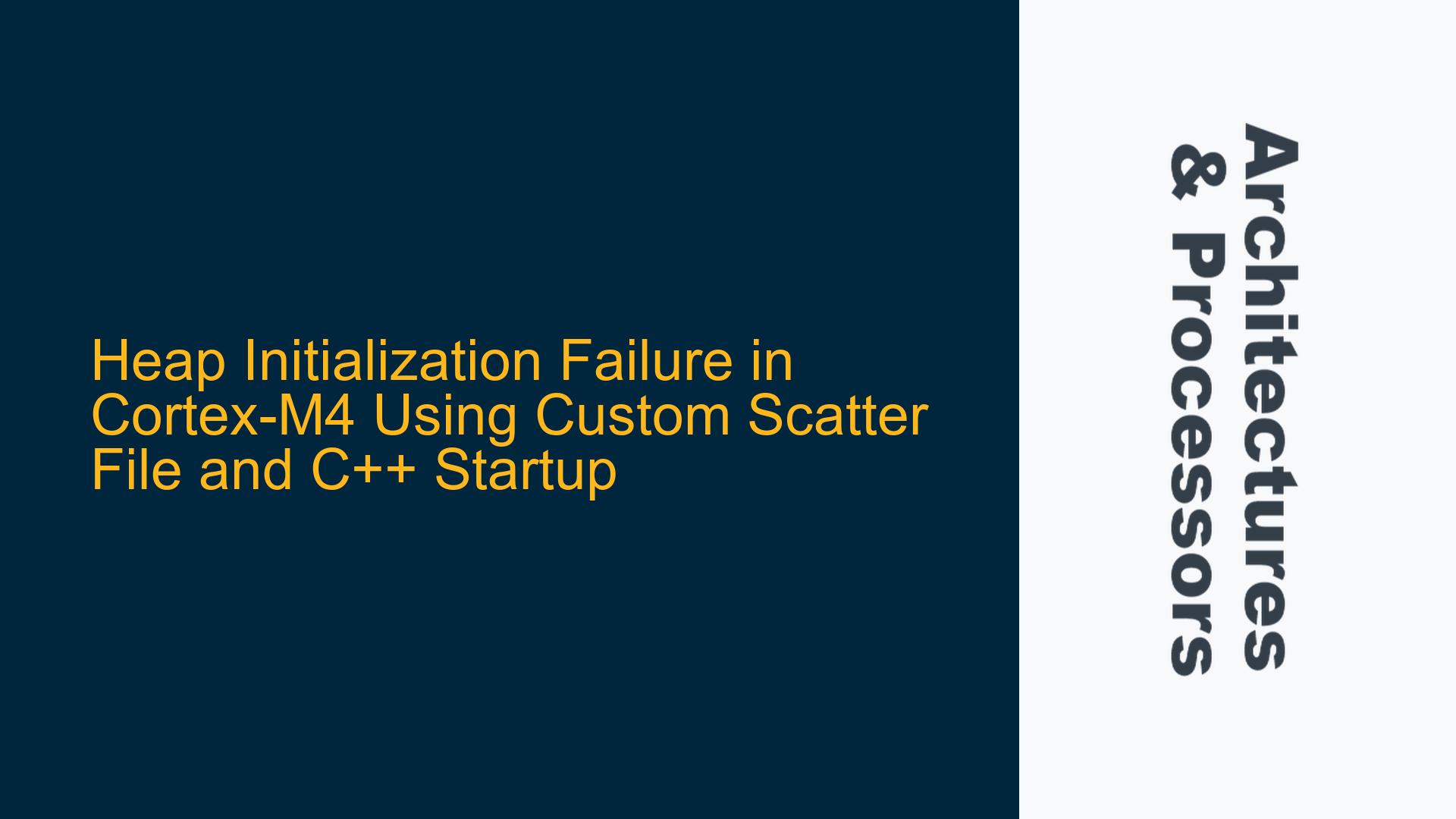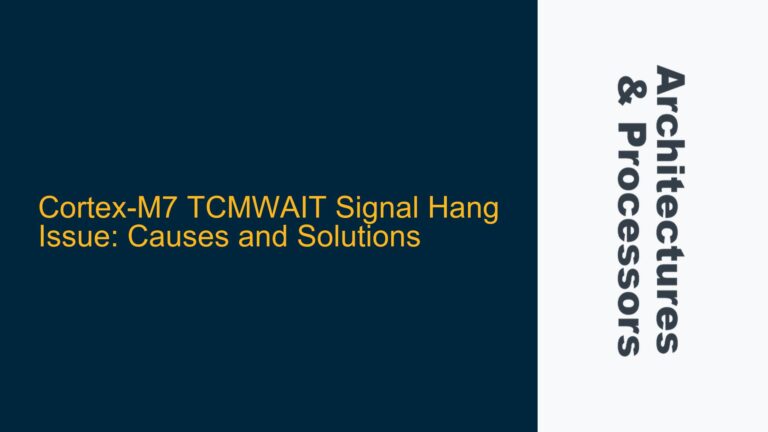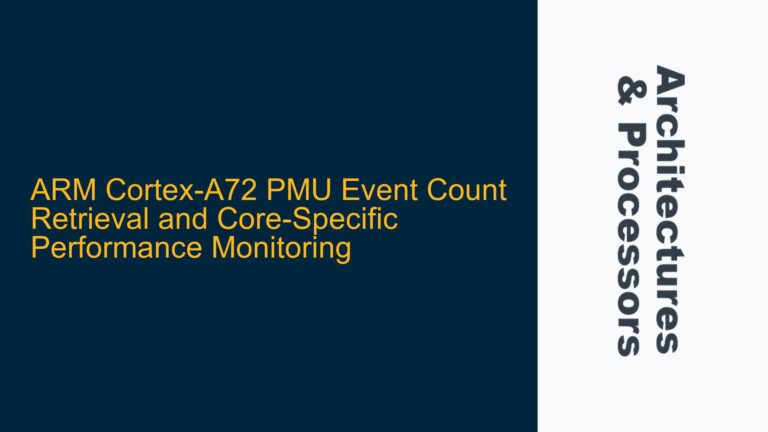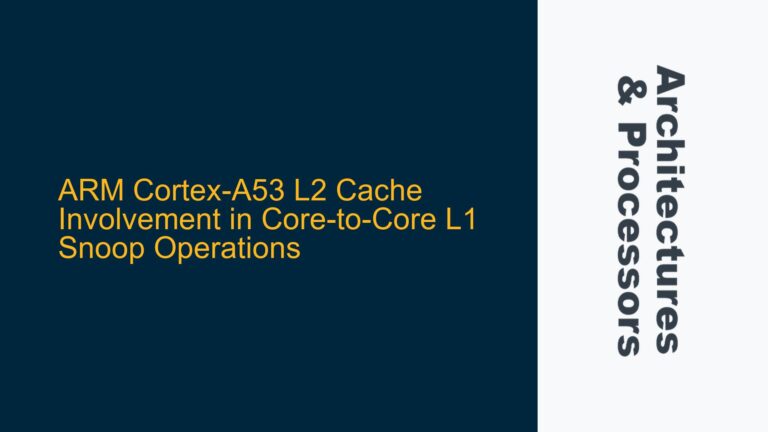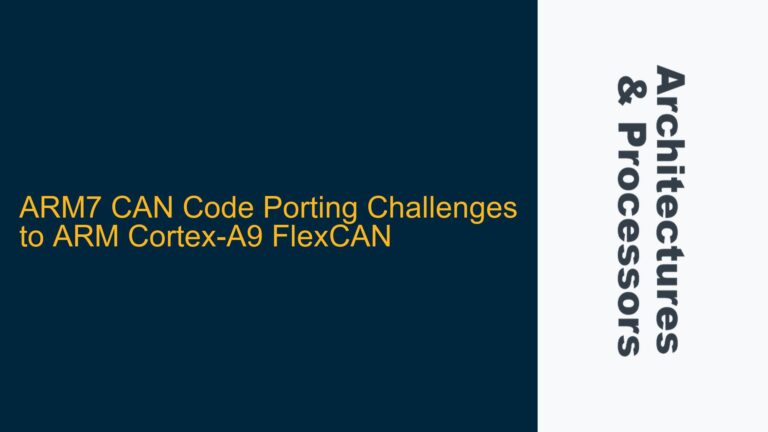Incorrect Heap Address Assignment in Cortex-M4 Custom Startup Code
The issue revolves around the incorrect initialization of the heap memory region in a custom C++ startup code for the ARM Cortex-M4 processor, specifically targeting the STM32F407VGT6 microcontroller. The heap is intended to be located in the Core Coupled Memory (CCM) region starting at address 0x10000000, but dynamically allocated variables are instead being assigned addresses in the Flash memory region starting at 0x08000000. This misassignment indicates a failure in the heap initialization process, despite the stack being correctly initialized. The problem persists even though the scatter file and startup code appear to follow the same logic as the standard startup_stm32f407xx.s file. Notably, enabling Microlib in the Keil settings and adding ARM_LIB_STACK and ARM_LIB_HEAP to the scatter file resolves the issue, but the goal is to achieve this without relying on Microlib.
Misconfigured Heap Symbol References in __user_setup_stackheap
The root cause of the issue lies in the incorrect referencing of heap symbols within the __user_setup_stackheap function. The function is responsible for setting up the stack and heap memory regions during system initialization. In the provided code, the heap base and limit are referenced using the symbols Image$$HEAP$$ZI$$Base and Image$$HEAP$$ZI$$Limit. These symbols are typically used for zero-initialized (ZI) data sections, which are not applicable to heap initialization. The correct symbols to use are Image$$HEAP$$Base and Image$$HEAP$$Limit, which directly reference the base and limit addresses of the heap region as defined in the scatter file.
Additionally, the function __user_setup_stackheap is not being called during the startup sequence. This is because the standard startup code expects a function named __user_initial_stackheap to be defined for stack and heap initialization. While ARM recommends using __user_setup_stackheap for new projects, the linker and startup code may still default to looking for __user_initial_stackheap unless explicitly configured otherwise. This discrepancy prevents the custom heap initialization code from being executed, leading to the default heap configuration being used instead.
Correcting Heap Initialization with Proper Symbol References and Function Naming
To resolve the issue, the following steps must be taken:
-
Update Heap Symbol References in
__user_setup_stackheap:
Modify the__user_setup_stackheapfunction to use the correct heap symbols. ReplaceImage$$HEAP$$ZI$$BaseandImage$$HEAP$$ZI$$LimitwithImage$$HEAP$$BaseandImage$$HEAP$$Limit, respectively. This ensures that the correct heap region addresses are loaded into the registers during initialization.__attribute__((naked, used)) void __user_setup_stackheap() { asm( "LDR sp, =__initial_sp\n" "LDR r0, =Image$$HEAP$$Base\n" "LDR r2, =Image$$HEAP$$Limit\n" "BX lr" ); } -
Ensure
__user_setup_stackheapis Called During Startup:
Verify that the__user_setup_stackheapfunction is correctly referenced in the startup sequence. If the linker or startup code expects__user_initial_stackheap, either rename the function or modify the startup code to call__user_setup_stackheapexplicitly. This ensures that the custom heap initialization code is executed during system startup. -
Validate Scatter File Configuration:
Ensure that the scatter file correctly defines the heap region within the CCM memory space. The scatter file should specify the heap region using theHEAPsymbol, as shown below:CCM 0x10000000 0x00010000 { STACK +0 ALIGN 8 EMPTY 0x4000 {} HEAP +0 ALIGN 8 EMPTY 0x0200 {} }This configuration allocates a 512-byte heap region within the CCM memory space, starting at
0x10000000. -
Disable Microlib and Verify Heap Initialization:
Disable Microlib in the Keil settings and remove any references toARM_LIB_STACKandARM_LIB_HEAPfrom the scatter file. Rebuild the project and verify that the heap is correctly initialized by checking the addresses of dynamically allocated variables. These addresses should now fall within the CCM memory region (0x10000000to0x1000FFFF). -
Debugging and Verification:
Use a debugger to step through the startup code and verify that the__user_setup_stackheapfunction is executed. Check the values loaded into registersr0andr2to ensure they correspond to the correct heap base and limit addresses. Additionally, inspect the memory map generated by the linker to confirm that the heap region is correctly placed in the CCM memory space.
By following these steps, the heap initialization issue can be resolved, ensuring that dynamically allocated variables are correctly assigned addresses within the intended CCM memory region. This approach eliminates the dependency on Microlib and allows for a fully custom startup implementation tailored to the specific requirements of the STM32F407VGT6 microcontroller.
Detailed Explanation of Heap Initialization in ARM Cortex-M4
Heap initialization in ARM Cortex-M4 microcontrollers involves setting up the memory regions for dynamic memory allocation. The heap is a region of memory used for dynamically allocated variables, and its base and limit addresses must be correctly defined to ensure proper memory management. The scatter file plays a crucial role in defining these memory regions, while the startup code is responsible for initializing them during system startup.
Scatter File Configuration
The scatter file is used to define the memory layout of the application, including the placement of code, data, stack, and heap regions. In the provided scatter file, the heap is defined within the CCM memory region:
CCM 0x10000000 0x00010000
{
STACK +0 ALIGN 8 EMPTY 0x4000 {}
HEAP +0 ALIGN 8 EMPTY 0x0200 {}
}
This configuration allocates a 512-byte heap region starting at 0x10000000. The HEAP symbol is used to reference this region in the startup code.
Startup Code Implementation
The startup code is responsible for initializing the stack and heap regions. The __user_setup_stackheap function is used to load the base and limit addresses of the heap into registers r0 and r2, respectively. These addresses are then used by the memory management routines to allocate memory dynamically.
The correct implementation of __user_setup_stackheap is as follows:
__attribute__((naked, used))
void __user_setup_stackheap()
{
asm(
"LDR sp, =__initial_sp\n"
"LDR r0, =Image$$HEAP$$Base\n"
"LDR r2, =Image$$HEAP$$Limit\n"
"BX lr"
);
}
This code loads the stack pointer (sp) with the address of __initial_sp, which is defined as the top of the stack region. It then loads the base and limit addresses of the heap into registers r0 and r2, respectively. The BX lr instruction returns from the function, allowing the startup sequence to continue.
Common Pitfalls and Debugging Tips
-
Incorrect Symbol References:
Using incorrect symbols, such asImage$$HEAP$$ZI$$BaseandImage$$HEAP$$ZI$$Limit, can lead to heap initialization failures. Always verify that the correct symbols are used in the startup code. -
Function Naming Mismatch:
The startup code may expect a specific function name, such as__user_initial_stackheap, for stack and heap initialization. Ensure that the custom function name matches the expected name or modify the startup code to call the custom function explicitly. -
Scatter File Errors:
Errors in the scatter file, such as incorrect memory region definitions or misplaced symbols, can prevent the heap from being correctly initialized. Carefully review the scatter file to ensure that all memory regions are correctly defined. -
Debugging with a Memory Map:
Generate a memory map file during the build process and inspect it to verify that the heap region is correctly placed in the intended memory space. This can help identify any discrepancies in the memory layout. -
Stepping Through Startup Code:
Use a debugger to step through the startup code and verify that the__user_setup_stackheapfunction is executed. Check the values loaded into registersr0andr2to ensure they correspond to the correct heap base and limit addresses.
By addressing these common pitfalls and following the recommended steps, the heap initialization issue can be resolved, ensuring that dynamically allocated variables are correctly assigned addresses within the intended memory region. This approach provides a robust and reliable solution for custom heap initialization in ARM Cortex-M4 microcontrollers.
